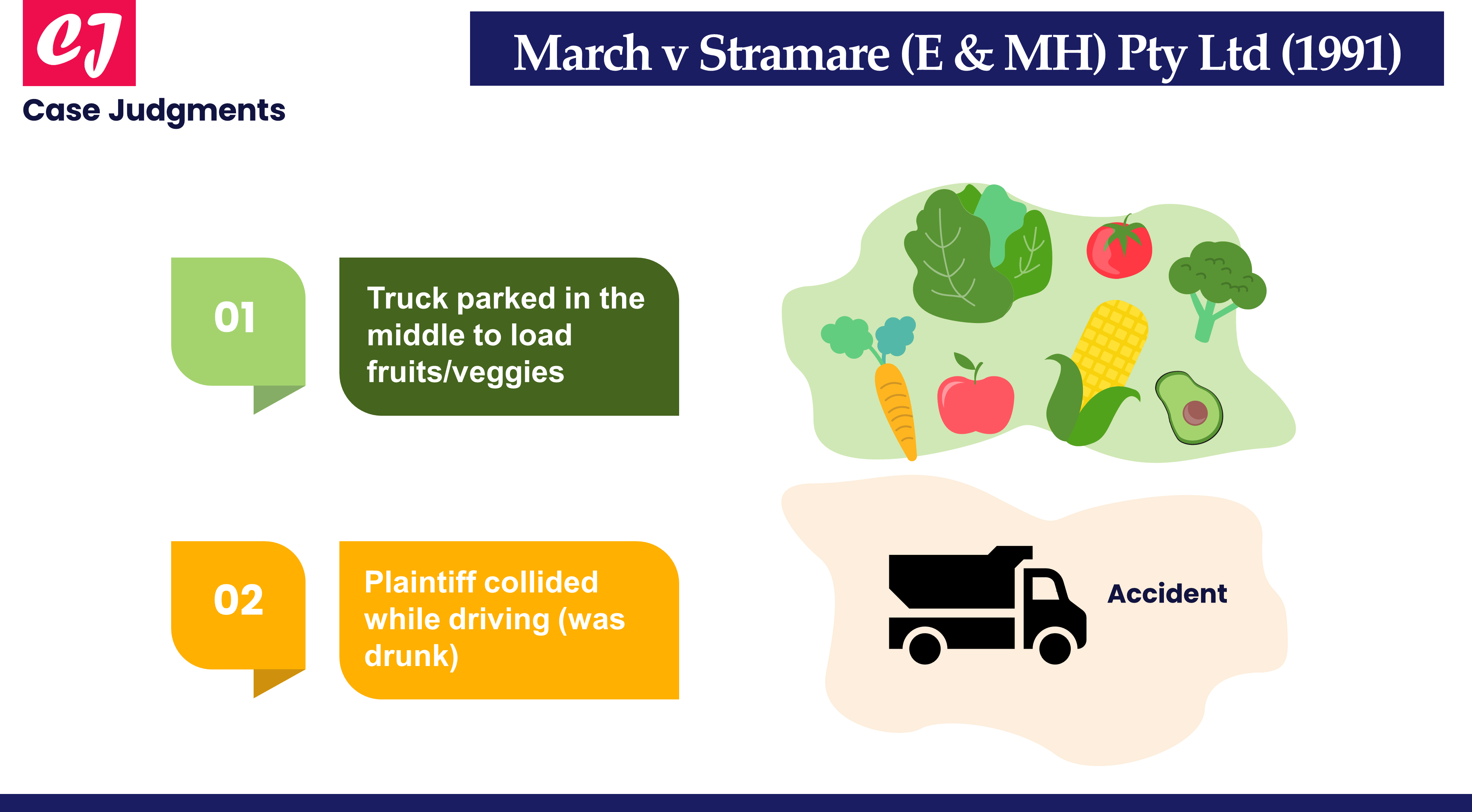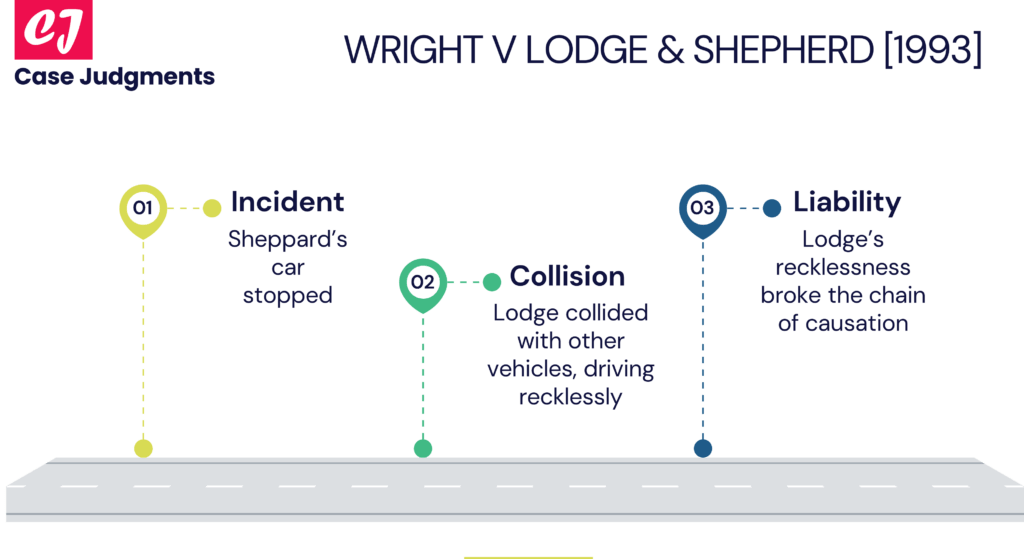
A Summary of March v Stramare (E & MH) Pty Ltd (1991)
March v Stramare (E & MH) Pty Ltd (1991) is a famous tort law case that highlighted the complexity of the ‘but for’ test in determining causation. It concerns the issue of finding the material cause of an injury if there are multiple causes contributing to it.
| Case name & citation: | March v Stramare (E & MH) Pty Ltd [1991] HCA 12; (1991) 171 CLR 506; (1991) 99 ALR 423 |
| Court: | High Court of Australia |
| Decided on: | 24 April 1991 |
| The bench of judges: | Mason CJ, Deane, Toohey, Gaudron and McHugh JJ. |
| Area of law: | Negligence, causation, the ‘but for’ test |
Facts of the case (March v Stramare)
Outside their fruit and vegetable market, the defendants had parked their truck in the center of a six-lane road. The truck was stationed there to be loaded with bins of fruit and vegetables. The street was illuminated, and the trucks’ hazard lights were turned on. The plaintiff, who was driving too quickly and under the influence of alcohol, collided with the rear of the parked truck. The plaintiff sustained injuries and filed a lawsuit against the defendant, stating that his injuries were caused by the defendant’s negligence in parking the truck in the center of the road.
Issue
Whose negligence had caused injury to the plaintiff? Was it because of the defendant’s negligence or the plaintiff’s own carelessness in driving? How can the ‘but for’ test be applied?
Initial judgment
In the first instance, the trial judge apportioned liability between the two parties as 70% (plaintiff) and 30% (defendant). The decision was appealed to the Full Court of the Supreme Court of South Australia where it was held that the plaintiff’s injuries were entirely as a result of his own negligence. The case was disputed again and was heard before the High Court.
What is the ‘but for’ test?
The ‘but for’ test is a universal legal test used by courts to establish a causal link between the actions of the defendant and the injury suffered by the claimant. While the ‘but for’ test is the fundamental rule, it has no application when there are several causes of an accident.
The essence lies in establishing a causal link between the defendant’s negligent conduct and the claimant’s injury where it can be demonstrated that the claimant would not have suffered injury had the defendant’s negligence not been a factor; that is, the injury would not have occurred ‘but for’ the negligence of the defendant.
Judgment of High Court in March v Stramare
The High Court upheld the trial judge’s decision.
The Court found that the concept of causation can be difficult and an event can be influenced by a number of causes that produce it. For example, if the truck had not been parked in the middle of the road, the accident would have been averted. Conversely, had the plaintiff not been driving the vehicle at an excessive speed, the accident would also have been prevented.
In March v Stramare (E & MH) Pty Ltd, the High Court ruled that the ‘but for’ test is not the exclusive way to determine causation. The High Court pointed out that the test is ineffective in situations where there are multiple causes of damage, each of which is sufficient to bring the damage.
Therefore, Chief Justice Mason suggested using common sense principles and value judgments based on public policy considerations to resolve the issue.
It was concluded that both the defendant and the plaintiff had acted negligently, and their respective negligence had played a role in causing injuries to the plaintiff. The damages to which the plaintiff was entitled were reduced by 70% to account for his own negligence.
Reasoning behind the decision – Multiple causes
The ‘but for’ test is challenging to apply when the claimant’s injury stems from multiple causes or when there are intervening acts between the defendant’s negligence and the claimant’s injury. In such cases, applying the ‘but for’ test may result in the unwanted outcome that none of the acts is the cause of the damage.
To put it differently, if the courts employed the ‘but for’ test, they would find that none of the acts were the direct cause of the loss suffered by the claimant because the same injury would have occurred without one or the other.
List of references:
- http://ndl.ethernet.edu.et/bitstream/123456789/49417/1/17.pdf
- https://fpbl.com.au/fpbl2022/Cases/march.htm
You might also like:
More from tort law:

